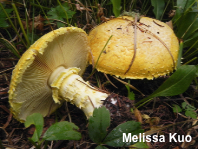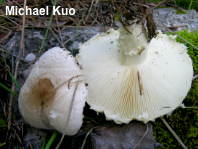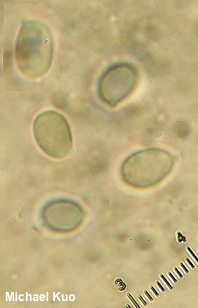| Major Groups > Gilled Mushrooms > Pale-Spored > Floccularia |

Key to 6 Floccularias in North America
References Cripps, C. L., V. S. Evenson & M. Kuo (2016). The essential guide to Rocky Mountain mushrooms by habitat. Urbana: University of Illinois Press. 260 pp. Lange, C. (2018). Floccularia Pouzar. In Knudsen, H. & J. Vesterholt, eds. Funga Nordica: Agaricoid, boletoid, clavarioid, cyphelloid and gastroid genera. Copenhagen: Nordsvamp. 626–627. Mitchel, D. H. & Smith, A. H. (1976). Notes on Colorado fungi II. Species of Armillaria (Fr.) Kummer. (Agaricales) Mycotaxon 4: 513–533. Mitchel, D. H. & Smith, A. H. (1978). Notes on Colorado fungi III: New and interesting mushrooms from the aspen zone. Mycologia 70: 1040–1063. Thiers, H. D. & Sundberg, W. J. (1976). Armillaria (Tricholomataceae, Agaricales) in the western United States including a new species from California. Madroño 23: 448–453. Volk, T. J. & Burdsall, H. H. (1995). A nomenclatural study of Armillaria and Armillariella species (Basidiomycotina, Tricholomataceae). Synopsis Fungorum 8. This site contains no information about the edibility or toxicity of mushrooms. Cite this page as: Kuo, M. (2020, February). The genus Floccularia. Retrieved from the MushroomExpert.Com Web site: http://www.mushroomexpert.com/floccularia.html © MushroomExpert.Com |


